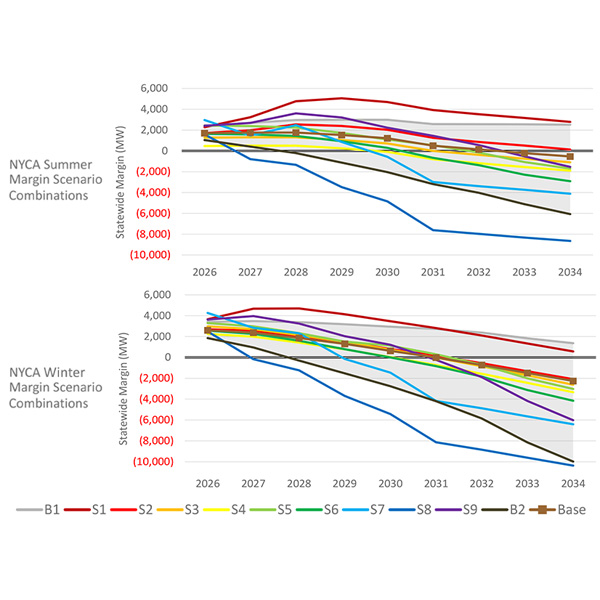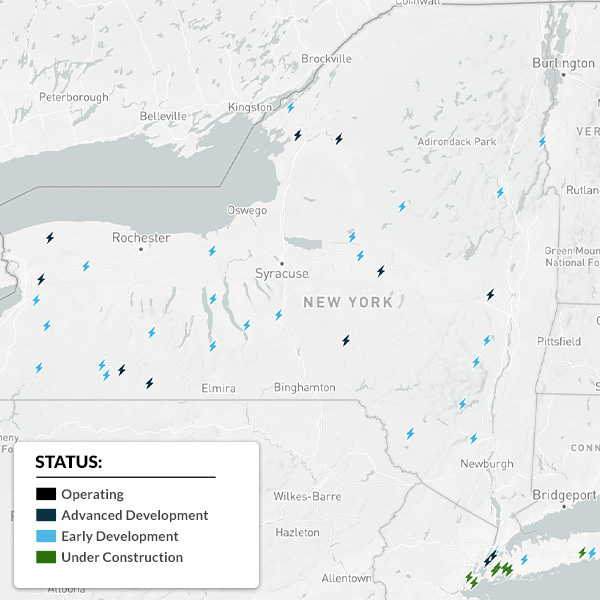NYISO
NY PSCNYISO Business Issues CommitteeNYISO Management CommitteeNYISO Operating CommitteeOther NYISO Committees
The New York Independent System Operator Inc., a not-for-profit regional transmission owner, is responsible for operating New York's bulk electrical grid, administering the state's wholesale electricity markets, maintaining grid stability, and ensuring the reliability and planning of the state's bulk energy system.
NYISO released an updated draft of its Comprehensive Reliability Plan for 2025-2034 that calls for the acceleration of new generation development and preservation of “critical, dispatchable capability.”
NYISO’s draft 2025-2034 Comprehensive Reliability Plan shows a wide range of possible scenarios for resource adequacy in New York, with the most negative outlook showing a deficit of up to 10 GW by 2034.
Debates over battery energy storage systems are playing out in towns and cities across New York as the state pursues its goal of 6 GW of energy storage by 2030.
As NYISO continues its Capacity Market Structure Review, the Market Monitoring Unit used its second-quarter State of the Market report to highlight potential issues with how the ISO forecasts resource availability.
A controversial natural gas pipeline proposal got a boost as the New York Public Service Commission approved the long-term plan for the state’s largest gas delivery system.
NYISO expects its 2026 budget to be $210 million, $8 million more than the 2025 budget, its CFO told the Budget and Priorities Working Group.
A new report estimates keeping New York’s aging commercial nuclear reactors running through 2050 would result in $50 billion in energy savings.
At a recent Budget and Priorities Working Group meeting, NYISO presented its final recommendations for 2026, which will define where the ISO puts its market design resources.
NYISO has proposed to stop using “winter to summer” and “summer to winter” ratios to determine maximum clearing and reference point prices in its seasonal demand curves.
NYISO shared a detailed analysis of New York’s late June heat wave, in which significant operating reserve shortages elevated energy prices.
Want more? Advanced Search










